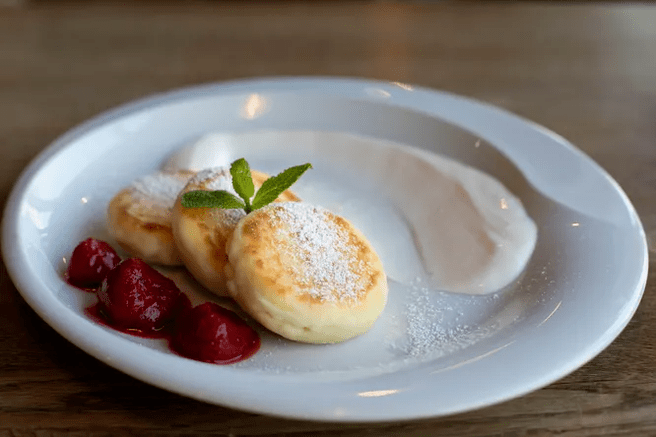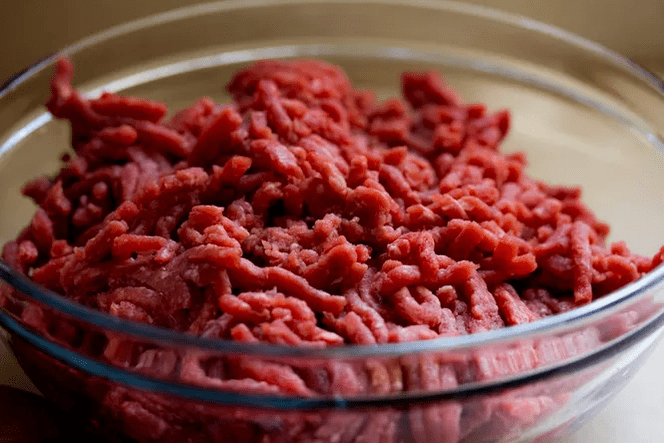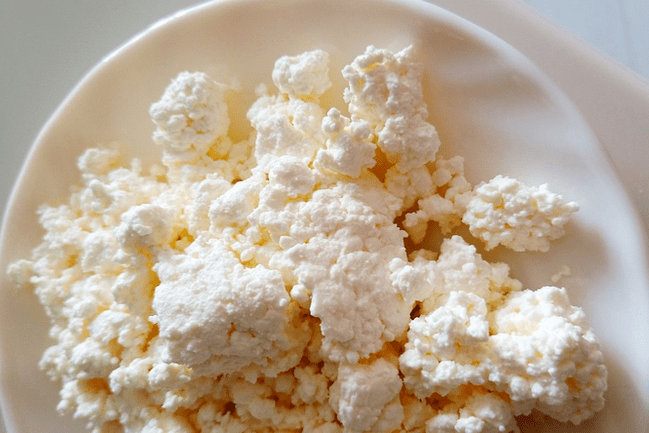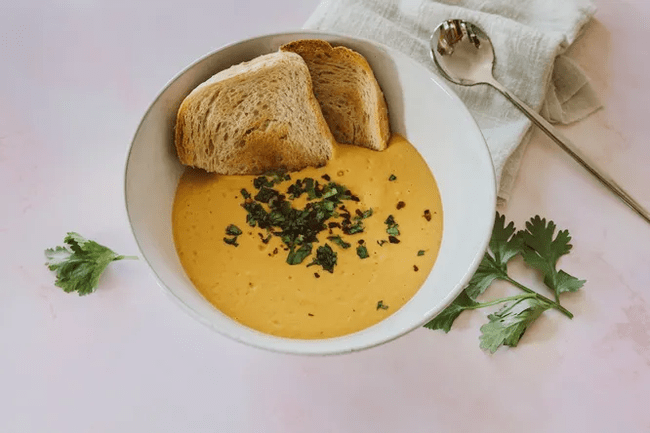Pancreatitis, the inflammation of the pancreas, is a rather dangerous disease that significantly worsens people's quality of life. And an important component of the proper treatment of this unpleasant disease is considered proper nutrition, which has a beneficial effect on the functioning of the organ. What should be the diet for pancreatitis - read in our material.

Do not self-medicate! In our articles, we collect the latest scientific data and opinions of authoritative experts in the field of health. But remember: only a doctor can diagnose and prescribe treatment. We want to help those who are faced with diseases of the pancreas (by the way, among office workers and former students, pancreatitis is in third place "in popularity"), and therefore we have collected in this article basic recommendations for a diet for pancreatitis and cholecystitis. We have also preparedsample menus and some helpful recipes. Read it, it will be helpful!
What is pancreatitis
Pancreatitis is an inflammation of the pancreas, which is involved in the digestive process and also regulates metabolism. It is a "2 in 1" organ, it has a complex structure: the greater part of the gland secretes the enzymes needed to digest food in the intestine, and the so-called "pancreatic islands" are an endocrine organ that produces the hormone insulin.
When the pancreas becomes inflamed, the release of enzymes into the duodenum stops. As a result, these aggressive substances are activated in the gland itself and begin to destroy it - this process is often called self-digestion. This releases toxins that travel through the bloodstream to other organs and can damage them. Pancreatitis can be acute or chronic.
Acute inflammation of the pancreas
Acute pancreatitis is a dangerous disease that requires immediate treatment, usually in a hospital setting. Most often this happens due to alcohol abuse or gallstone disease, when the stone blocks the duct. The disease is characterized by severe pain in the upper abdomen, sometimes radiating to the back; nausea; vomiting; general deterioration.
Chronic pancreatitis
With chronic inflammation of the pancreas, the organ is gradually destroyed. The main causes of the disease are the use of alcohol and smoking. The most typical manifestation is abdominal pain, which usually occurs after eating. The lack of digestive secretion from the pancreas leads to the fact that food is poorly digested, flatulence and bloating occur. There is often a lack of appetite and weight may decrease.
Symptoms of pancreatitis
The main symptom of both acute and chronic inflammation of the pancreas is pain in the upper abdomen. Often such pains are dangerous. In the chronic form, heaviness in the stomach, nausea, stool disorder are often observed. Unpleasant sensations make a person suspect pancreatitis, after which the diagnosis is confirmed with the help of tests and other studies.
Why is a diet necessary for pancreatitis (inflammation of the pancreas)?
The diet for pancreatitis in adults is designed to reduce the load on the affected organ so that it can recover. In acute pancreatitis, it is also important to reduce the synthesis of enzymes to stop the process of destruction of the gland.

Principles of diet in pancreatitis
- Refusal of any foods that provoke the production of enzymes - smoked, spicy, pickled, fried.
- Food should be warm (not cold or hot), porridge.
- Eating should be partial, portions should be small.
- The main emphasis in the diet is on protein products - up to 200 grams of them should be consumed per day. But fats and carbohydrates are significantly limited.
- The amount of salt is reduced to 3-5 grams, the food is not salted during cooking.
- Raw foods are excluded. You cannot eat fresh vegetables and fruits, only boiled or baked ones.
- Carbohydrates are consumed in moderation, but foods containing sugar should be limited.
What should be the diet in acute pancreatitis?
The diet for acute pancreatitis is as strict as possible: the menu on the first day does not include food at all, only water. After a few days, you can eat small portions of liquid food - vegetable broths and purees, boiled porridges, mucous decoctions, liquid meat purees. You can gradually expand the range of dishes using permitted products.
Diet in chronic pancreatitis
The diet menu for chronic pancreatitis is more varied, but it is recommended to stick to it for a long time, at least six months. It is believed that during this time, not only will the condition of the pancreas improve, but the patient will also give up any harmful foods, such as fried, smoked and pickled foods.
Traditionally, for chronic pancreatitis, the "Table No. 5p" diet is prescribed. The system of dietary tables was developed in the 20s of the last century, and although it has already been abandoned, many doctors still recommend following the principles of such diets.
The "Table No. 5" diet is prescribed for pancreatitis and cholecystitis, but especially for the recovery of the pancreas, a special version of this diet is recommended - "Table No. 5p". It is distinguished not only by a reduced amount of fat in food, but also by limiting carbohydrates. You should consume a lot of protein: proteins are necessary for the rapid recovery of pancreatic tissues.
The diet for exacerbation of pancreatitis is stricter, it is formed in the image and likeness of the diet recommended for the acute form of the disease. Mashed food, separate meals, avoiding salt and spices will help you to cope with the disease faster.
What you can eat if you have pancreatitis (inflammation of the pancreas)

So it's time to find out what you can eat on a diet for pancreatitis in order to recover quickly and avoid painful attacks. We remind you that the list of permitted products varies depending on the stage of the disease. During exacerbations, it is recommended to fast and eat a very limited range of foods, but in the period of remission, many more foods are allowed. Low-fat cottage cheese occupies an important place in the diet of people suffering from pancreatitis.
- lean meat (beef, chicken, turkey, rabbit and even lean pork are suitable);
- lean fish (pike, pollock, flounder, cod);
- low-fat cottage cheese, low-fat and soft cheese;
- eggs in the form of a steamed omelet made from whites (you can eat no more than one yolk per day);
- low-fat fermented milk products;
- milk - only low-fat, if tolerated;
- cereals (semolina, rice, oatmeal, buckwheat);
- stale bread, inedible crackers;
- pasta;
- boiled or roasted vegetables (potatoes, beets, carrots, zucchini, pumpkin);
- boiled or baked sweet fruits (apples, bananas, pears);
- dried fruit;
- jelly, marmalade, honey, jelly - in small quantities.
The list of what you can eat on a diet for pancreatitis is not so short: if you wish, you can easily cope without disorders, being satisfied with only permitted foods for a long time. It is worth considering that the recommendations were developed 100 years ago and since then many new products have appeared. They can be added to the menu with caution if they are high in protein and low in fat, such as cooked squid.
What should not be eaten on a diet with pancreatitis
Diet for pancreatitis imposes serious restrictions on the menu, but an improvement in the condition can be expected only if you strictly follow them. The following foods cannot be included in diet menu No. 5 for pancreatitis:
- legumes (the only exception is green beans in moderation, boiled or stewed);
- onions, garlic, radishes, radishes, peppers and other vegetables with a spicy taste;
- spinach, sorrel, fresh herbs;
- all types of cabbage;
- mushrooms;
- sour fruits;
- marinades and pickles;
- carbonated drinks, packaged juices (it is also better not to drink fresh juices);
- alcohol;
- coffee and cocoa;
- ready-made sauces, mayonnaise;
- fast food;
- fresh bread, pastries;
- any confectionery;
- ice cream;
- fatty meat and fish;
- sausages and delicatessen;
- caviar;
- canned foods;
- smoked meats;
- meat, fish, mushroom broths.
With an exacerbation of pancreatic pancreatitis, the diet becomes even stricter, and even those foods that can be safely included in the diet during remission can be included in the list of prohibited foods. Here you should listen to your doctor's recommendations.
Diet for chronic pancreatitis (inflammation of the pancreas): sample menu for a week

We present an approximate diet for chronic pancreatitis for one week. This is not a dogma, but just a guideline for those who want to restore the pancreas with proper nutrition.
Monday
- Breakfast: a day-old bread sandwich with low-fat cheese, a bowl of porridge with water or diluted milk.
- Second breakfast: a portion of low-fat cottage cheese with dried fruit.
- Lunch: vegetable soup, steamed beef cutlet with mashed potatoes on water with a small piece of butter.
- Afternoon snack: baked apple.
- Dinner: boiled lean fish, allowed steamed vegetables.
Tuesday
- Breakfast: oatmeal with water
- Second breakfast: baked sweet apple puree
- Lunch: vegetable cream soup, steamed chicken breast; berry jelly.
- Afternoon snack: low-fat yogurt.
- Dinner: steamed omelette with vegetables.
Wednesday
- Breakfast: cottage cheese casserole with dried fruits
- Second snack: banana
- Lunch: rice and vegetable soup; steamed rabbit meatballs, compote.
- Afternoon snack: apple jelly, biscuits.
- Dinner: steamed fish, vegetable puree.
Thursday
- Breakfast: rice porridge, soft-boiled egg.
- Second breakfast: yogurt, baked apple.
- Lunch: soup with pasta; fish meatballs with vegetable puree.
- Afternoon snack: low-fat cheese sandwich.
- Dinner: lazy dumplings with cottage cheese, a little sour cream.
Friday
- Breakfast: cottage cheese with a spoonful of honey or jam.
- Second breakfast: steamed egg white omelette.
- Lunch: mashed potato soup, roast beef with steamed vegetables, jelly.
- Afternoon snack: dried fruit compote.
- Dinner: lean fish quenelles, rice.
Saturday
- Breakfast: semolina porridge, soft-boiled egg
- Second breakfast: yogurt.
- Lunch: fish soup with rice, stewed rabbit with potatoes, compote.
- Afternoon snack: cottage cheese casserole.
- Dinner: cheese sandwich, steamed protein omelet.
Sunday
- Breakfast: buckwheat porridge.
- Second breakfast: baked apple.
- Lunch: cream of pumpkin soup, steamed beef cutlets, pasta.
- Afternoon snack: jelly, biscuits.
- Dinner: cottage cheese, boiled vegetables.
Diet for the pancreas: recipes
Despite the limited range of products, the diet for pancreatitis can be quite diverse. Here are some ideas for inspiration.

Ingredients:
- rice in sacks;
- potatoes;
- Carrot;
- pumpkin;
- Salt.
Method of preparation: make rice water - boil the rice in a pot with plenty of water, then remove the envelopes. Grate the carrots, chop the remaining vegetables, put everything in a pan with rice water, add the rice there, cook until the vegetables are ready. Add salt, stir, turn off. If necessary, grind everything in a blender.
Fish mat
- Lean fish fillet;
- White biscuits;
- Milk;
- Egg white;
- Salt.
Preparation: grind the fish in a meat grinder, soak the crackers in milk, also pass through a meat grinder, mix with minced meat. The egg white is whipped into foam, added to the minced meat, salted and mixed. From the resulting minced meat, form round doners. Then boil or steam them.
Pumpkin puree soup with oatmeal
Ingredients:
- pumpkin;
- potatoes;
- Hercules;
- cream;
- A little oil for sautéing.
Method of preparation: cut the pumpkin and potatoes, stew them in a deep pot with a little oil, being careful not to burn them. Add salt, add the oats, add water, stir, simmer until the oats are ready. Put the contents of the pan through a blender, return it to the pan, add the cream and simmer for a few more minutes. Can be served with breadcrumbs.
According to reviews, it is not very easy to follow a diet for pancreatitis, at least in the phase of pureed food, but with its help you can achieve a really stable remission. Patients note that they feel much better on such a diet.
Results of treatment of chronic pancreatitis with diet
In chronic pancreatitis, the diet is prescribed not for a week or a month, but for at least six months. More often, it is recommended to limit yourself to harmful foods for life, so as not to provoke an exacerbation.
Together with other methods of treatment, the diet for the pancreas has a beneficial effect on the organ and promotes its rapid recovery. The longer there are no exacerbations, the more boldly you can expand your diet for pancreatitis, including all new products.
In some cases, the pancreas recovers completely thanks to timely treatment and diet, and after the end of therapy, you can return to your usual way of eating. Still, it is better to give up unhealthy habits and choose PP meals even after full recovery.
The number of different diets cannot be enumerated. Some of them are prescribed for therapeutic purposes, and others are aimed at reducing body weight. Human nutrition, like any other organism, affects its health, because the composition of the food and the saturation of the necessary vitamins and trace elements determine the possibility of normal physiology. Any restrictions, both in composition and quantity, inevitably affect our organism. Each disease has its own mechanism of development and, accordingly, nutrition should also be different.
The pancreatitis diet is aimed at reducing inflammation in the pancreas. The sooner you start following it, the better results you can expect. In the acute stage, fasting can be used, but usually it lasts no more than two to three days. After that, foods with maximum fat restrictions are introduced very smoothly. Lean types of meat and poultry without skin are suitable (veal, lean beef, chicken, rabbit, turkey, etc. ). For garnish, you can use buckwheat, barley, mashed potatoes, stewed vegetables. Fried, spicy, salty foods, baked goods, refractory fats (lamb, pork, goose, duck, fatty beef, poultry skin, margarine, mayonnaise) can contribute to a new exacerbation.
The use of additional enzyme therapy will improve the condition. Preparations of minimicrospheres and microtablets are more effective. The usual dose is approximately 25, 000 units. The diet described above has the right to exist, but if its use is justified and followed only for a short period of time. Stabilization of the condition with pancreatitis is an indication for a planned and gradual expansion of the diet.































